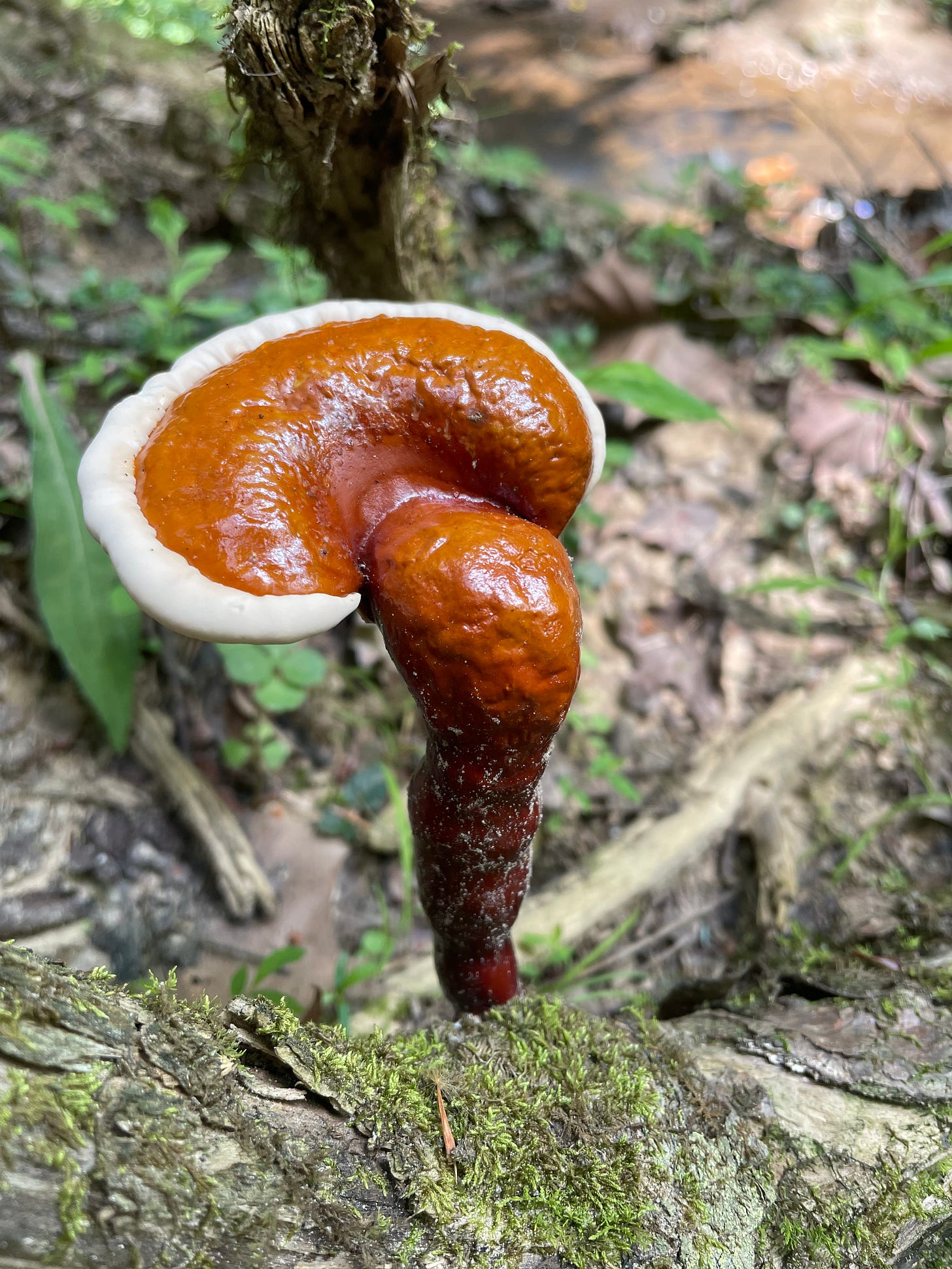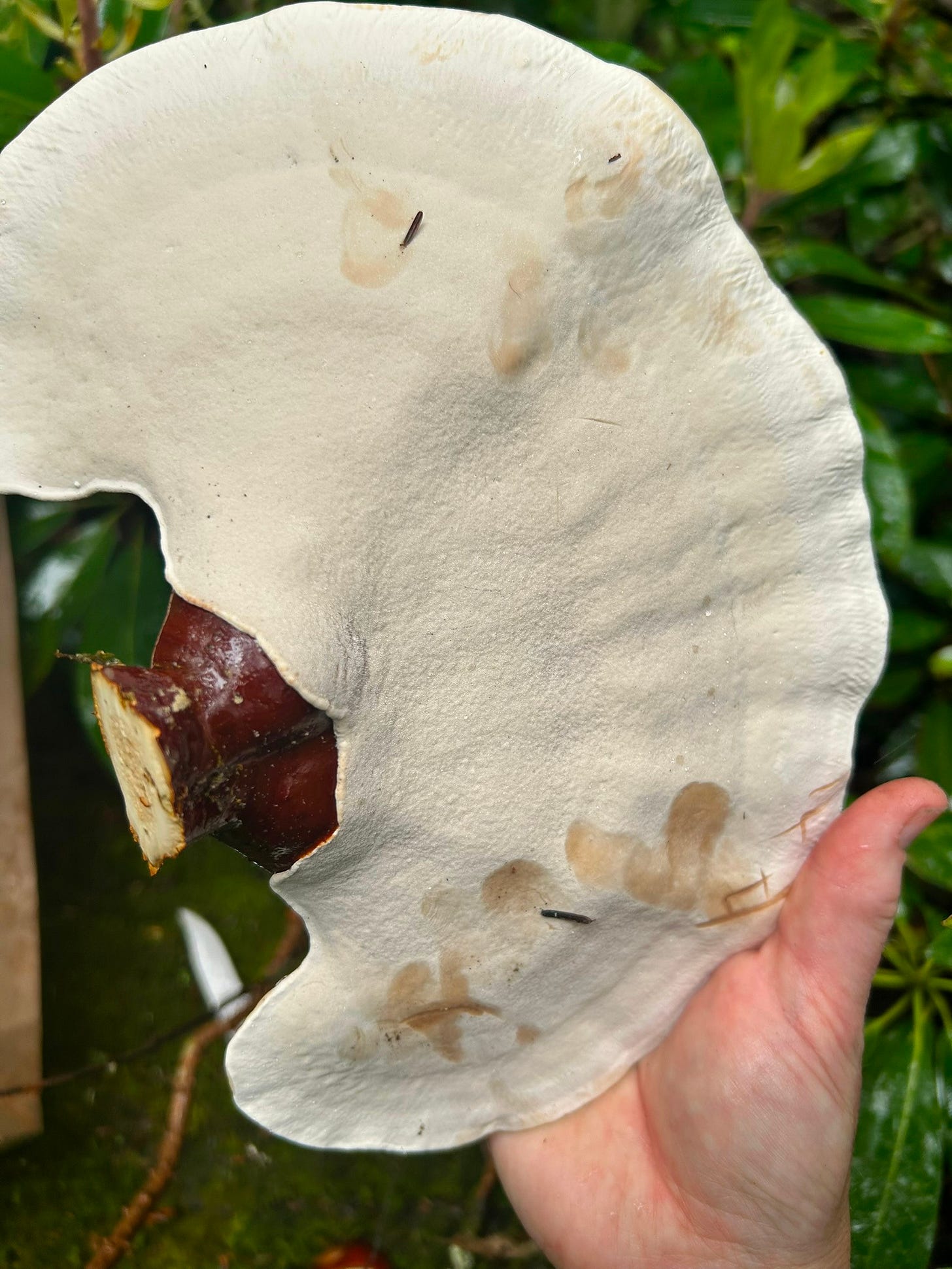Ganoderma tsugae
Family: Ganodermataceae
Growth form and description: Polypore mushroom growing on dead or dying conifers, usually Eastern hemlock (Tsuga canadensis). The mushroom is named after the hemlock. Young mushrooms are conical in shape and become more fan-shaped as they mature.
Top surface: Shiny and shellacked, giving it the classic Reishi sheen (The etymology of Ganoderma are Ganos = sheen; derma = skin.) The young mushroom starts out mostly white in color, as and it grows, the white moves to the outer edge while the edge closest to the tree is reddish in color, with a spectrum of yellow to orange in between. Very mature mushrooms will be almost entirely reddish brown.

Underside and spores: Contains almost invisible white pores when young, becoming more brownish with age. Bruises brown when scratched, and the spore print is brown (Kuo, 2007).

Part used medicinally: Mushroom (fruiting body of the fungus) is considered the most medicinally active (although some companies use a mycelial extract).
Actions: mainly immunomodulatory (regulates/modulates the immune system), which gives it all the rest of of its medicinal properties
Traditional uses: There are no medicinal uses by indigenous peoples in America that are documented for G. tsugae; (at least none that I’ve found, but that doesn’t mean it wasn’t used). A very closely related species, Ganoderma lucidum, has been used for at least 2,000 years in Traditional Chinese Medicine (TCM) where it is known as the "mushroom of immortality.” G. lucidum is native to Europe and Asia and continues to be used today for a wide range of health benefits, including cancer support.
Modern use: G. tsugae is not used as widely as G. lucidum. David Winston (2007) reports that it does not have all of the profound actions for which G. lucidum is known for, but does have immune-enhancing and anti-inflammatory properties. However, due to its close relationship to G. lucidum, G. tsugae has been studied scientifically for anti-allergenic, immunomodulation, anti-cancer, and anti-inflammatory actions. For example, research by Chen et al. (2015) found that its triterpenes help modulate the allergenic response. Additionally, its polysaccharides (the water soluble parts - which means tea is probably better here) benefit the gut microbiome by acting as a pre-biotic, promoting healthy bacteria (see Zhang, 2023 for a summary of research).
References:
Kuo, M. (2007). 100 Edible Mushrooms. Ann Arbor, MI: University of Michigan.
Winston, D. (2007). Adaptogens: Herbs for Strength, Stamina, and Stress Relief. Rochester, VT: Healing Arts Press.
Chen, M.-L., Hsieh, C.-C., Chiang, B.-L., & Lin, B.-F. (2015). Triterpenoids and Polysaccharide Fractions of Ganoderma tsugae Exert Different Effects on Antiallergic Activities. Evidence-Based Complementary and Alternative Medicine : eCAM, 2015. https://doi.org/10.1155/2015/754836
Zhang H, Zhang J, Liu Y, Tang C. Recent Advances in the Preparation, Structure, and Biological Activities of β-Glucan from Ganoderma Species: A Review. Foods. 2023 Aug 7;12(15):2975. doi: 10.3390/foods12152975. PMID: 37569244; PMCID: PMC10419088.

